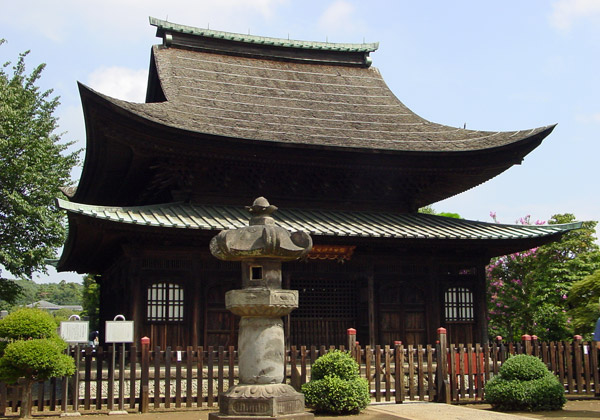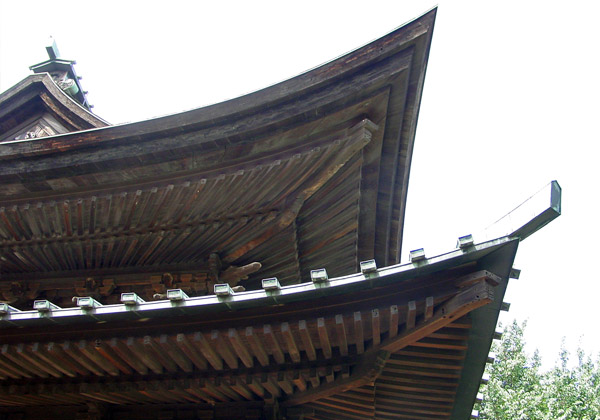|
|
| |
| nokizori 軒反 |
 |
 |
 |
 |
| KEY WORD : architecture
/ general terms |
 |
| |
| Curvature of the eaves. There are two types: shinzori
真反 (true curvature), in which the center eave curves from the center to the
corners and *naginatazori
長刀反 (halberd curve), an eave that was straight at the center but abruptly
curved up at each end. The eave curve in the Asuka period was very slight. It
became more pronounced in the Nara and Heian periods. The
ends of the eaves during the Kamakura and Nanbokuchou periods were quite sharply curved. The most exaggerated curvature at the eave ends can
be seen at many temple buildings in the Zen style *zenshuuyou
禅宗様, especially in the Momoyama and Edo periods. |
| |


|
|
 |
 |
| REFERENCES: |
| |
 |
 |
 |
| EXTERNAL LINKS: |
| |
 |
 |
 |
| NOTES: |
|
|
 |
 |
 |
(C)2001 Japanese Architecture and Art Net Users System. No reproduction
or republication without written permission.
掲載のテキスト・写真・イラストなど、全てのコンテンツの無断複製・転載を禁じます。 |
| |




